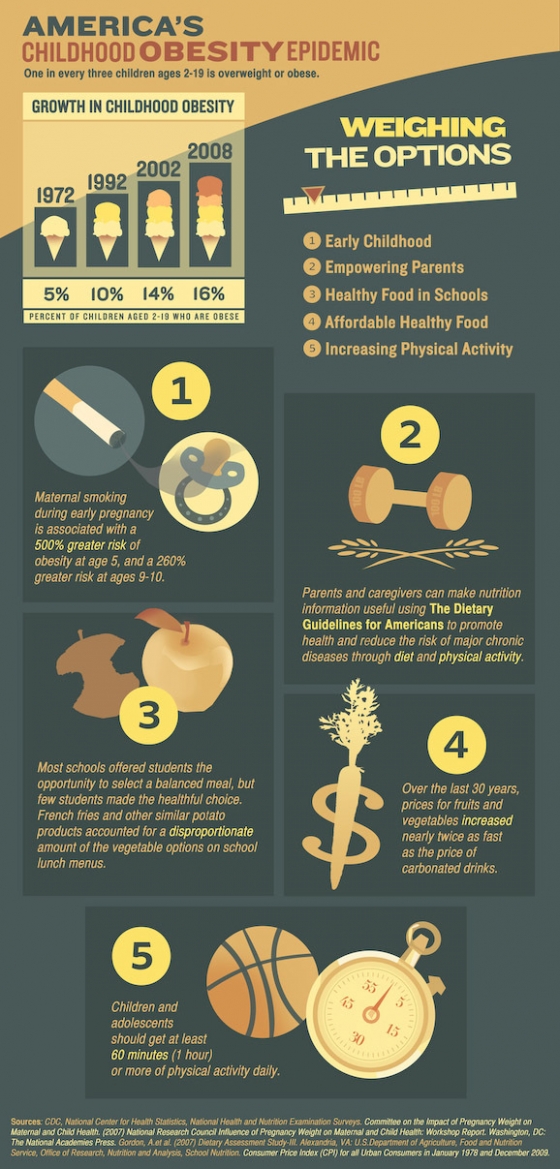As industrialized societies move toward more sedentary lifestyles, it is a natural outcome that obesity rates would rise. What has traditionally been stable, however, were the rates of childhood obesity. Kids go out, run, and play regularly, but that has changed over the last three decades. Video games, more TV stations with cartoons, and other temptations are keeping kids less mobile than ever before.
Childhood obesity has more than doubled in children and it has risen by 4x in adolescents in the last 30 years.
Childhood Obesity Facts
Although a lack of movement is partially to blame, there are also other factors involved. Foods that are convenient, pre-packaged options are as nutritionally dense as natural foods are. Kids are choosing to eat more sugar than before and there is salt added to many of today’s quick service foods – so much that a week’s worth of sodium is present in some meals. Is it any wonder that kids are getting larger when they’re moving less and consuming more calories?
- Nearly 21% of kids aged 12-19 are obese today, compared to the 5% that were considered obese in 1980.
- In 2012, more than 33% of all children were either overweight or obese.
- 70% of youth who are classified as obese have at least one risk factor for cardiovascular disease, such as high cholesterol or high blood pressure.
Children are the future of our planet, but many of our children aren’t getting a fair shot at the starting line because of poor choices that are being made. There is no blame being assigned – just a simple look at facts. Because caloric imbalance is an ongoing and ever-increasing issue with households today, kids are struggling to stay at a healthy weight. There are genetic causes, environmental causes, and yes, even behavioral causes that all contribute to this. We know what the problem is. Instead of blame, let’s find a solution that will work for every child so that they can have a fighting chance.
Just How Bad Is The Problem Of Childhood Obesity?
- Kids that are considered to be obese are more likely to be diagnosed with a prediabetic condition thanks to high and continuous glucose levels.
- Joint and bone problems are likely to afflict kids who are overweight or obese, which further adds to the lack of movement that can help to burn calories.
- Kids who are classified as obese by the age of 2 are more likely to also be obese as adults.
- Kids who are overweight or obese have much higher risks of developing heart disease, diabetes, strokes, cancer, and osteoarthritis as adults compared to kids who are able to maintain a healthy weight.
- Almost 13 million kids today either are or have been overweight or obese in their lifetime.
- Hispanic youth are the most likely to be overweight or obese as nearly 1 out of every 4 kids has a weight problem in this racial demographic.
If education is one of the primary factors that influences childhood obesity, then that’s actually good news. It means with enough resources and sweat equity, it is possible to educate families about the dangers of childhood obesity so that changes can be made now instead of later. This is especially true for girls – when the head of a household had a college degree, a girl from that household was 2x more likely to be overweight or obese by than a head of household who had just a high school diploma or GED.
Does Income Play A Role In Childhood Obestity?
- Children who live in a home with an income to poverty ratio that is 100% or less have a greater risk of being obese than children who live above the 100% ratio.
- As income levels go up, childhood obesity levels as a percentage of the population go down. There is a 1% drop for about every 30% increase in the income to poverty ratio.
- When children are able to attend low-income preschool, then obesity and extreme obesity rates have decreased for the last 7 years.
- If action is not taken now, it is estimated that up to 40% of the children who were born in the year 2000 or later will suffer from health conditions related to obesity at some point in their lifetime.
- 20% of school-age kids have up to 6 snacks per day with food that is supplemented with quick serve or take out options.
It’s easy to blame the parents for childhood decisions, but everyone has a piece of the action. Schools are cutting gym classes. Communities are cutting funding to after-school programs and park maintenance. There just isn’t the same opportunities available for kids to get up and move as there used to be. Part of that is we’ve become more safety conscious as a society and don’t want kids walking to school by themselves. Another part of that, however, is the fact that we’re all eating an extra 15 pounds of sugar per year than we did in the 1970’s. With the average child eating three snacks a day for an extra 200 calories, the extra food adds up. That’s why it is so important to get kids up and moving now than it ever has before.

Although millions of people visit Brandon's blog each month, his path to success was not easy. Go here to read his incredible story, "From Disabled and $500k in Debt to a Pro Blogger with 5 Million Monthly Visitors." If you want to send Brandon a quick message, then visit his contact page here.
